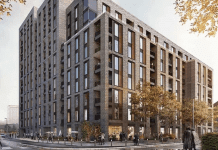Leading Construction, Energy and Projects lawyer, Jeremy Williams analyses smart cities and explains why they are vital for economic growth
In recent years, major cities across the globe have heartily embraced the smart city concept. But definitions of the term – and examples of the ways cities are becoming technologically ‘smart’ – vary widely. The terms used to describe smart cities also differ – cyberville, digital city, electronic communities, intelligent city, MESH city, teletopia and wired city being just a few.
But what exactly does it mean?
At its core, smart cities aim to gather information to create actions that create positive change in a community. This can vary from city to city, but often includes environmental factors like reducing pollution, utilising resources more cleverly, or enhancing the happiness of visitors and residents.
Economic factors hugely influence what a city’s smart ambitions are. The needs of a city in a developing nation will, of course, be vastly different to those of an advanced city in a wealthy nation – like Tokyo or San Francisco.
So a smart initiative could be anything from wirelessly managing streetlights to lower energy costs, or using sensors to monitor water mains for leaks and air quality for high pollution. It could also be more complex – creating smart parking initiatives that track available parking spaces and vehicle movement to control traffic flow.
Ultimately what all smart city initiatives have in common is the desire to drive economic growth by utilising technology to create smart outcomes. This, and the aim of improving the quality of life for the city’s inhabitants by promoting local development.
However, it’s important to remember that while the use of cutting edge technology is an important factor in categorising how smart a city is, it’s not the sole criteria. Perhaps more important are the citizen-driven smart initiatives. Things like increasing the accessibility of Wi-Fi in public spaces, for example, can be revolutionary for citizens of developing nations – while it’s often par for the course in the Western world. Smart cities aren’t just about delivering the most advanced technology – they’re about delivering what their citizens need to improve their wellbeing – as well as driving economic growth.
This broader focus has led to a benchmarking system that smart cities can be ranked against – and compared to one another. This has created competition to be recognised as the leading smart city and has led to a rapid growth in smart initiatives.
So, what’s the methodology for comparing smart cities?
To be considered smart, cities may have adopted and made technological strides to cover some (or all) of the following six principles:
1. Smart Economy
Such as innovative or dynamic funding platforms – this could be for example incentivising small businesses through loans or grants to develop innovative practices. On the opposite side of the spectrum, it could mean providing substantial funding for large developments.
2. Smart Environmental Practices
For example, schemes to strategically reduce landfill waste and create easy alternatives. This could also lead into smart energy initiatives such as remotely controlling utilities to use cleaner energy – and crucially – to do so more efficiently.
3. Smart Governance
An example of this could be city regions launching initiatives to advance health and wellbeing, like wellness centres.
4. Smart Living
Such as the introduction of Acts or Bills that encourage public bodies to improve the social, economic and environmental well-being of the city. This could mean, for example, legislation that encourages a public body to prioritise environmental impacts – such as using recyclable materials instead of new materials in construction and development projects.
5. Smart Mobility
For example, Metro schemes or methods of joined-up public transport. As an example, this could relate to smart roads which, depending on the traffic, could utilise the hard-shoulder on an access road into the city to substantially reduce bottle-necking and increasing the flow of the traffic.
6. Smart People
Such as ‘catapult centres’ that give the relevant industry leaders access to state of the art facilities allowing them to create new products. Such initiatives in major cities often include programmes aimed at current university students who may have innovative ideas while carrying out their studies. Those students may be given the opportunity to pitch their ideas, develop prototypes, and funded to implement the innovative ideas.
So, how can a city utilise these features to become recognised as ‘smart’?
In many cases, cities can miss out on being acknowledged as smart simply because of a lack of self-promotion. They may have many smart successes – but they need to shout loudly about them.
It can be daunting and difficult for smaller cities to compare themselves against big name smart players like London, New York or Hong Kong, but, if their infrastructure and policies are becoming smarter, they need to vie for the recognition they deserve.
It’s also important to have an overall, national vision. Pockets of good practice are not enough and can result in missed opportunities for real growth and a place on the smart city stage. By combining a mix of ambition and a willingness to challenge and change, cities across the globe can seize the opportunity to become recognised as innovative, forward thinking and, most of all, smart.
. . . . . . . . . . . . . . . . . . . . . . . . . . . . . . . . . . . . . . . . . . . . . . .
Jeremy Williams
Partner – Construction, Energy and Projects Team
Capital Law
Tel: 0333 2400 489
Twitter: @Capitallawllp














